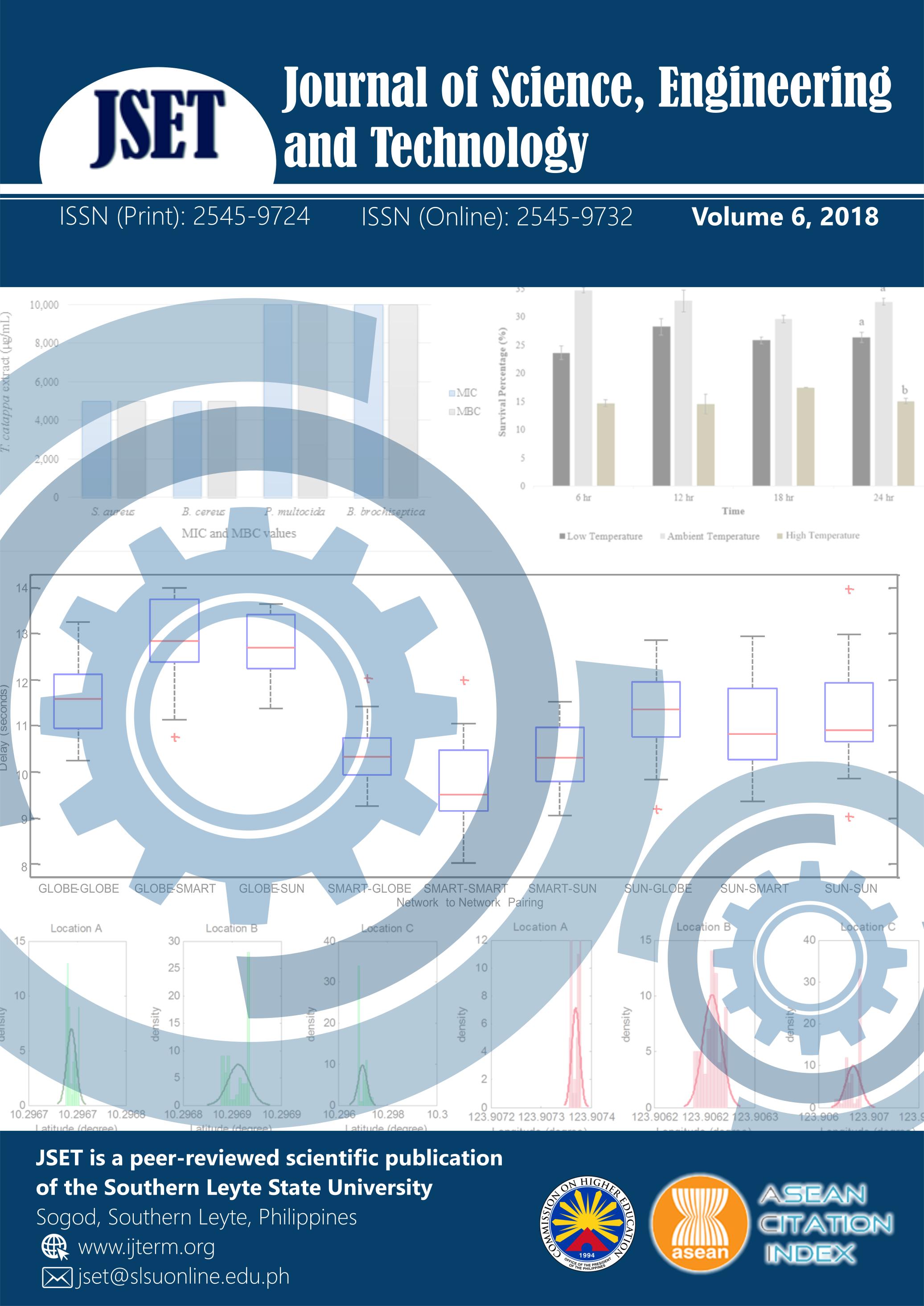Performance Efficiency Evaluation of a Modified Laboratory-scale Process for Rubber Wastewater Treatment Using Moving Bed Biofilm Reactor)
DOI:
https://doi.org/10.61569/wtcpka72Keywords:
Ammonia removal, Chemical oxygen demand, Industrial wastes, Total nitrogen content, Total suspended solid contentAbstract
Industrial effluents such as wastewaters from rubber processing plants contain organic matter which favors growth of microorganisms and emits gases that have adverse effects on the environment. In this study, a modified model of treating rubber wastewater was developed. The performance of the model was evaluated and compared to the recommended standards. Effluents/outputs from the modified model were subjected to laboratory procedures and the data were analyzed using efficiency formula. Important chemical and physical properties of the effluents/outputs were determined. It was found that the performance efficiency of the modified rubber wastewater treatment process using moving bed biofilm reactor K1 in terms of COD removal, ammonia removal, total nitrogen content, and total suspended solid content met the suggested standards. Furthermore, the modified process demonstrated faster microbial growth and higher biomass in the aerobic tank than in the anoxic tank, but the overall combination of microbial growth and biomass in the anoxic and aerobic tank was responsible for the efficiency of the modified model.
Downloads
Published
Issue
Section
License

This work is licensed under a Creative Commons Attribution 4.0 International License.
This is an open access article distributed in accordance with the Creative Commons Attribution 4.0 Unported (CC BY 4.0) license, which permits others to copy, redistribute, remix, transform and build upon this work for any purpose, provided the original work is properly cited, a link to the license is given, and indication of whether changes were made. See: Creative Commons Attributions 4.0 International License.








